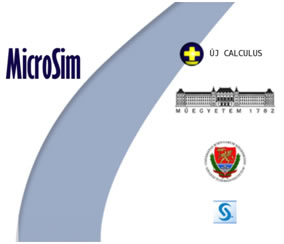Profile of Calculus
Új Calculus Ltd. was founded by economists and mathematicians of the Hungarian Central Statistical Office in 1982. The main activities of our company primarily aims at SMEs and cover development of accounting systems, end-user systems, web-based applications, economic applications, we offer mathematical, statistical and information technological support for decision making. Our applications are typically based on .NET, Java, PHP and SAS. We localize softwares of foreign companies, we are authorized and exclusive dealers of these products in Hungary, such as SAS training courses (Amadeus), SambaJAM (SambaStream), etc. We develop customized ERP solution with CRM add-in for manufacturers, Project, document and workflow management system and Management information system. CMS, our customized ERP software for SMEs is .NET-based. This system is compatible with other systems, which proves its adaptability. This solution doesn’t only enable to transact financial processes but also supports other business processes besides accountancy, invoicing and other bank operations. It follows the whole procedure of storing, handles supplier commissions and master data (about company, human resource, scope of activities, customers, suppliers, store, item, etc.). It provides a solution which is adjustable to other production management and designer systems owning to support of production preparation. The newest CMS development is our integrated CRM solution.
Data warehouses, data mining, analysis, microsimulation research
Calculus offers own-developed, unique data warehouse solution, analyzing system and SAS application mainly for sate and bank sector. Data warehouses enable companies to reach the most plentiful source of information available about their specific market. In 2003 Calculus INFRA, our own developed data warehouse solution was created in .NET and MS SQL and SAS platforms. Our main references are APEH (the Hungarian tax office), KVVM (Ministry of Rural Development).
 Calculus participates in many researches. In 2001 the Microsimulation Research Team was established jointly with Department of Information and Knowledge Management at Budapest University of Technology and Economics. The aim was to develop and maintain a system which supports economists to analyse data available in the administration. A multilingual end-user application, the general purposive Microsimulation service system was developed. It is a SAS-based Microsimulation Modelling and Decision Support System provided with data warehouse functions.
Calculus participates in many researches. In 2001 the Microsimulation Research Team was established jointly with Department of Information and Knowledge Management at Budapest University of Technology and Economics. The aim was to develop and maintain a system which supports economists to analyse data available in the administration. A multilingual end-user application, the general purposive Microsimulation service system was developed. It is a SAS-based Microsimulation Modelling and Decision Support System provided with data warehouse functions.
Lately, we are research partners of Foundation for Information Society from the commission of bank sector. Calculus had opportunity to carry out projects at commercial banks with focus on data quality management, data clarification, data mining, modelling and analysis. We also offer Microsimulation Frame System as a service, and the newest version was developed in Java and SAS. Our company is not only SAS system distributor but also SAS application developer. We develop economic applications and create statistical analysis with mathematical and informatics support for order of bank sector participators. We offer professional SAS analysing services as SaaS to SMEs who cannot afford to own SAS licence and employ specialist in the field of data analysis and data mining.
Data mining education at universities
The head of Calculus, Mr. József Csicsman is a tutor of two Hungarian universities. He educates Data Mining at Budapest University of Technology and Economics for foreign students as well, and Practical Application of Statistics at University of Szeged. He manages optional SAS programming courses for all interested students of any faculties. Some topics among the case studies written by the students during the course are: knowledge discovery, fraud detection, modelling of client behaviour (user profiling), analysis of the Hungarian population from many aspects based on the data of the Hungarian Central Statistical Office (KSH) and modelling demographic changes, etc.